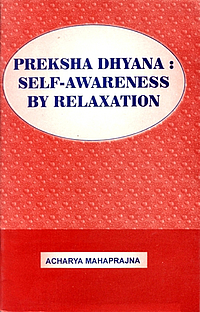 | About: |
| In this booklet, we have extensive discussion regarding Kāyotsarg i.e. total relaxation of the body accompanied by full awareness of the real self. What is relaxation? How does it differ from meditation? Can relaxation become meditation? What is the raison d'etre of relaxation? What benefits could be derived from relaxation? It is necessary to know the answers to these questions both with a scientific and philosophical background.
Relaxation is a pre-condition of meditational exercise. It can be called the first phase of meditation. To steady the mind, one must first suspend all voluntary motion of the body, observe complete silence and slow down the rate of respiration. These are essential preconditions of meditation. When the body attains and maintains a motionless state, and the mental process of speech is also halted, mental concentration and meditation will naturally follow.
Relaxation plays an important role in treatment of physical and mental diseases. When a bone is broken, the affected part is put in a plaster, thus giving it a compulsory motionless state. Doctors know that for the broken bone to mend properly, the relative motion of the broken parts must be stopped. Similarly, when one consults a psychiatrist, he is asked to relax on a couch. When the patient is thoroughly relaxed, the doctor can reach his subconscious mind and know the root cause of the problem.
Finally, Kāyotsarg is a simple but important tool for not only physical and mental health but also (and this is the real purpose) for emotional health and integrated development of personality.
| |
| Author: | Acharya Mahaprajna |
| Publisher: | Jain Vishwa Bharati, Ladnun, India |
| Editor: | Muni Mahendra Kumar |
| Translators: | Muni Mahendra Kumar, Jethalal S. Zaveri |
| Edition: | First Edition, 2003 |
| Read online: | |
| Bookshop: | Preksha Dhyana: Self-Awareness by Relaxation |
| Pages: | 38 |
| Dimensions: | 13.90 x 21.40 x 0.30 cm (W x H x D) |
| Weight: | 67 g |